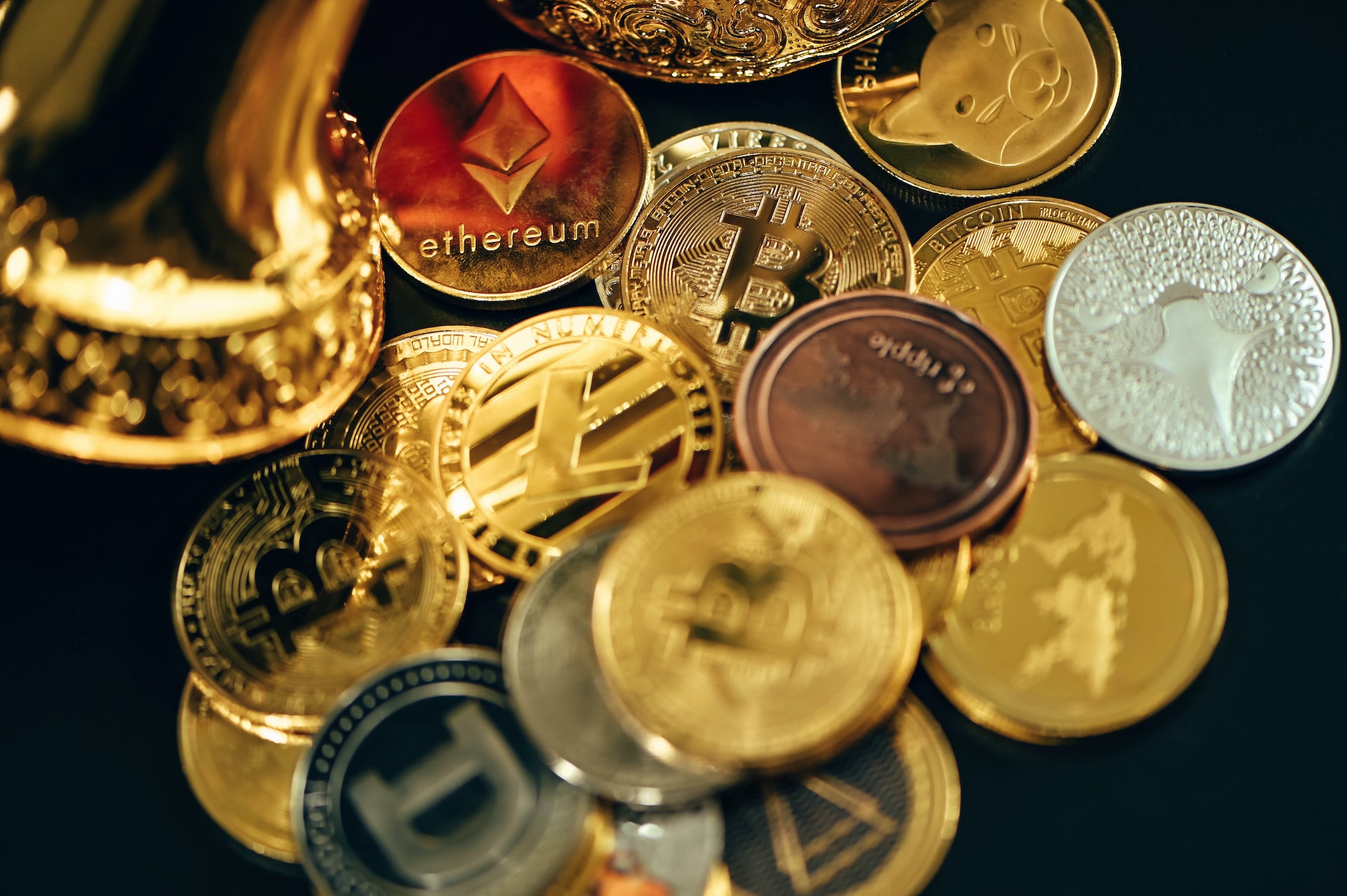Ever since Bitcoin’s 2009 debut, thousands of cryptocurrencies have been released. Each altcoin provides significant potential but comes with significant risk. Cryptocurrencies compete in an ever-growing landscape, making it more difficult for new cryptos to stand out and generate mainstream attention. While more cryptos get released each month, fiat currencies remain stable. Less than 200 fiat currencies exist, and we don’t have to worry about that number doubling anytime soon. More merchants are accepting Bitcoin, but most of these merchants do not accept every single altcoin. If you’re confused about why there are so many different cryptocurrencies, you’re not alone. We’ll walk you through crypto’s history and address why many digital assets populate the crypto marketplace.
The Birth of Cryptocurrency
The Great Recession caused immense suffering and wiped out millions of jobs. However, many businesses and resources came out of those tumultuous years, including Bitcoin. Dissatisfied with the current financial system, Satoshi Nakamoto launched the cryptocurrency in an effort to decentralize finance.
The First Cryptocurrency: Bitcoin
Bitcoin is the original cryptocurrency that sheds some light on the blockchain network. The coin traded below $1 for several years. Cryptocurrency wasn’t as accessible in its early days. Crypto exchanges did not exist for the first few years. The first cryptocurrency exchange was launched in 2011. As exchanges made Bitcoin more accessible to the masses, the virtual currency picked up popularity and brought altcoins into the spotlight.
Cryptocurrency’s Rise and Popularity
Cryptocurrency exchanges helped put Bitcoin on the map, but its price appreciation captivated millions. People watched as Bitcoin climbed from below $1 per coin to over $19,000 at its 2017 peak. Those capital gains impressed investors worldwide, and more people piled into the asset. Investors have endured several crashes, including the current cycle, where Bitcoin has tumbled more than 50%.
As Bitcoin continued to surge, many digital currencies followed, most notably Ethereum. Ethereum is the second-largest cryptocurrency by market cap, and its blockchain has contributed to many ICOs. In addition, most cryptocurrencies and NFTs rely on Ethereum’s blockchain.
Investors have come to expect more from crypto exchanges. So, they look for platforms that offer crypto trading and various other benefits designed to help you make and save more money.
How Many Kinds of Cryptocurrencies Are There?
Over 18,000 cryptocurrencies are in circulation, with roughly 1,000 new cryptos getting launched each month. Investors can choose from more cryptos than fiat currencies and publicly traded stocks combined. It’s impossible to keep track of every cryptocurrency, but some gain mainstream attention and rally rapidly.
Why are There So Many Cryptocurrencies?
Most crypto enthusiasts know Bitcoin, Ethereum, and a few other cryptocurrencies. No one has the time or desire to know all 18,000 cryptocurrencies and keep track of new additions. Despite this context, more virtual currencies flood the crypto market. The crypto supply is large, but that’s not necessarily a good thing. A wide selection can expose you to cryptocurrency scams that can hurt the general public. Some crypto marketplaces let you focus on the top cryptocurrencies, which can simplify your search for cryptos and save you money.
Potential Returns
The potential returns for crypto are undeniable. Bitcoin and other cryptocurrencies have produced generational returns for early, long-term investors. Lately, altcoins have stolen the media spotlight and generated substantial returns. Between December 2020 and May 2021, Dogecoin appreciated by over 20,000%. Most investors would be thrilled to have that percentage as their lifetime portfolio returns. Unfortunately, Dogecoin got hit harder than Bitcoin during this crash cycle, as it’s down more than 90% from its all-time high.
Some crypto enthusiasts see this crash as a tremendous buying opportunity, especially the long-term crypto holders who have endured several crypto crashes. Making more money and lowering expenses are the two best ways to increase your returns.
Innovation
Most cryptocurrencies have wild price swings that make them look like speculative investments. However, behind the dramatic price movements is an innovative technology that is revolutionizing the world. Blockchain technology enables decentralized finance, transparency with transactions, and other capabilities.
Mainstream Adoption
Many investors pay attention to the crowds. When assets gain momentum, investors pour money into them to avoid missing out. As a result, some developers have created cryptocurrencies, seeking to capitalize on the mainstream appeal. It’s no secret that a successful crypto launch can make the founder a lot of money. The lure of great riches has attracted millions of people to crypto and led to new coins.
Forking
Forking isn’t the main driver of new cryptocurrencies, but it has contributed to the wide variety of choices. Crypto miners have disagreements about the blockchain; if these disagreements aren’t resolved, forks occur. During a fork, a cryptocurrency splits into multiple entities. For example, Litecoin, Bitcoin Cash, and Bitcoin Gold emerged from Bitcoin forks. These disagreements don’t happen often, but you can expect sharp price movements during a crypto fork.
ICO Success
Initial coin offerings have generated high returns for investors, and the lower barrier to entry has enticed more people to produce digital currencies. The ICO process has fewer regulations than an IPO and can provide quick access to capital. Most ICO organizers use the Ethereum blockchain for their cryptocurrencies. ICOs have created a speculative buzz around cryptocurrencies. High returns in a short amount of time will attract any investor, even if those results are not sustainable. Eventually, the most useful cryptocurrencies will remain, and the speculative ICOs will lose their charm. However, current trends haven’t stopped people from creating more cryptocurrencies and launching ICOs.
Most Popular Types of Cryptocurrencies
In the stock market, you can find stocks based on sectors. This concept helps investors diversify their investments and tap into multiple opportunities. Cryptocurrencies have a similar dynamic. Crypto investors and traders buy different types of cryptocurrencies instead of only buying popular cryptocurrencies that all serve the same function. As a result, you can spread your investments across several types of crypto. These asset groups are among the most popular in the cryptocurrency market.
DeFi Tokens
Decentralized finance creates more transparency in financial transactions. People can exchange DeFi tokens for goods and services to avoid extra fees.
NFT Cryptocurrencies
NFT cryptocurrencies form the backbone of several NFT marketplaces. People use these cryptocurrencies to mint and exchange NFTs. These cryptocurrencies also support blockchain gaming. Most NFT cryptocurrencies use the Ethereum network for their digital infrastructure.
Governance Tokens
These tokens give you voting rights for a blockchain. Token holders can assemble and make suggestions about the blockchain’s future. Governance tokens are similar to stocks with voting rights.
Stablecoins
Some investors flock to Stablecoins to protect themselves from market volatility. Stablecoins derive their value from a specified asset, such as the U.S. dollar. Stablecoins use fiat currencies and other predetermined assets as collateral to reduce volatility.
Utility Tokens
Utility tokens provide exclusive perks to their holders. Companies may offer these tokens to customers. In addition, utility token holders may get access to certain discounts, products, and services.
Security Tokens
Security tokens are similar to stocks and bonds. These tokens give you partial ownership of a group of assets. While Security tokens are currently unavailable to retail investors, the SEC can approve them for retail investors in the future.
Shitcoins
Shitcoins are speculative cryptocurrencies that have lost substantial value and serve no purpose. Some cryptocurrency founders only create their coins for a short-term profit without any desire to pursue a long-term strategy. Many Shitcoins see gains in the short term and promptly collapse after the pump-and-dump scheme concludes.
Memecoins
Memecoins are speculative cryptocurrencies with no long-term vision. Many of these cryptocurrencies become pump-and-dump candidates, with Dogecoin and Shiba Inu as notable examples.






